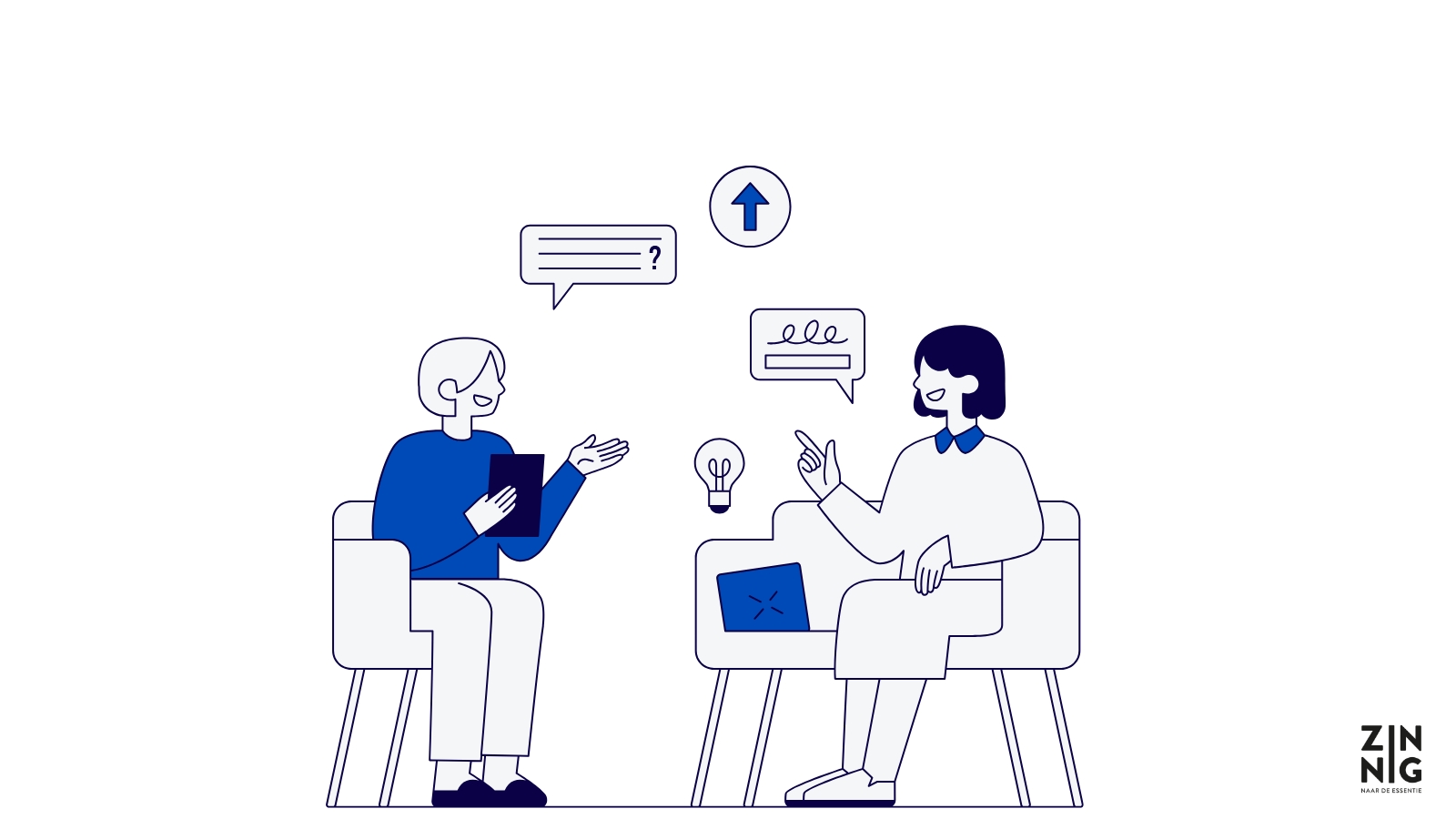Artificial intelligence is speeding up our work as copywriters in all kinds of ways. Not a day goes by without some form of back-and-forth with our digital writing buddy, ChatGPT. But if there’s one thing robots haven’t mastered yet, it’s the art of the interview – something we at ZINNIG do often to help shape our clients’ copy. A real conversation calls for warmth. For thoughtful questions. Or a listening ear that’s also attuned to silence. For nuance and understanding. And a touch of AI magic, of course.
If you think interviewing is just sticking a microphone in someone’s face, think again. Like most things in life, preparation is key. But the way you communicate before, during, and after the interview says a lot about your skills as well. Time to dive into what really matters. How do you get someone to open up and share their story, whether it’s for a briefing, a blog, an article, or a testimonial? Spoiler: interviewing isn’t rocket science, but experience has taught us a few handy tricks. We love putting these to work for clients who want testimonials from their own customers, need expert advice on an article, or specific content for a magazine feature. A good interview is the foundation of a strong story.
1. Don’t be a stalker
Didn’t we just say that preparation is half the battle? While that’s certainly true, too much prep can steer the conversation in a particular direction before it’s even begun. If you cling too tightly to a rigid script (even one generated by AI), you’ll miss subtle details and surprising insights during the interview. Of course it helps to know who you’re talking to and what they do, but why not let them tell you in their own words? That’s always more natural and less forced than a profile plucked from the internet. While a list of questions is definitely helpful, give your discussion partner the freedom to steer the conversation as well. If there’s one thing we know for sure, it’s that people love sharing their passion and expertise. Your job is to keep the audience in mind while they talk.
2. Hit record
Every interviewer has their own method and approach. Experienced journalists swear by pen, paper, and a sharp mind to capture the essence of the conversation. Many rookies seem keen to try and break the world record for typing during an interview. Whatever you do, always record your interview. Not as some kind of keepsake, but to help you bring nuance to your writing later on. It’s important to stay as true as possible to your interviewee’s words. And the only way to do that five days after the interview is with a recording. Just make sure to ask your interviewee for permission first. GDPR and all that.
3. Read the room
Getting your interviewee to open up – or bare their soul – starts with creating the right atmosphere. Try to get a sense of whether the conversation will take a formal tone or a more casual one. How you address someone matters. When interviewing a doctor or a CEO, don’t be overly friendly when discussing serious topics. Your ability to read the room will determine how the conversation unfolds. Don’t be afraid to ask questions: is your interviewee comfortable talking about a sensitive subject? Put the ball in their court. Not only will this show your consideration, it will also help you set the right tone from the start.
4. Dare to ask – especially when you don’t know the answer
Copywriters and interviewers aren’t supposed to know everything. More often than not, you interview someone to learn more about a specific topic. When your interviewee uses complex words, put your pride aside. Instead of Googling it when you get home, ask them straight-up what they mean. You’ll not only gain a better understanding of the topic, you’ll also get to use the expert’s own words instead of a generic definition from the internet. Ask specific, follow-up and deep questions. Ask for examples and anecdotes. Then build on what they tell you. Even a simple ‘How do you mean?’ can open the door to more details. Plus, that little bit of courage will make your piece stand out from the rest.
5. Not all silences are awkward
A golden rule for a truly great interview: don’t rush to fill the silence when someone is done talking. Especially if their answer didn’t quite satisfy you. A pause can be the spark you need to get your interviewee to elaborate. It also gives you the chance to dig a little deeper into a topic you want to learn more about. Learning to incorporate intentional pauses takes practice. But once you get past the awkwardness, you’ll be rewarded with fresh material to write about. Writing takes guts! And sometimes that means stepping out of your comfort zone.
The art of the interview takes years to master. I’ve interviewed hundreds of people and still learn something new every day. The more you do it, the more your personal style will evolve and the easier it will be to fine-tune. Or you could just hire a professional wordsmith. Work smarter not harder, right?
Need help with your interviews? We’ve got you covered! From interviewing doctors for JessaLinea magazine to chatting with fascinating retail and business personalities for publications like UNIZO and SuperMAG. We can also conduct in-depth interviews for your JCI or Livia nominations. Send your interview request to dubbel@zinnig.be!


